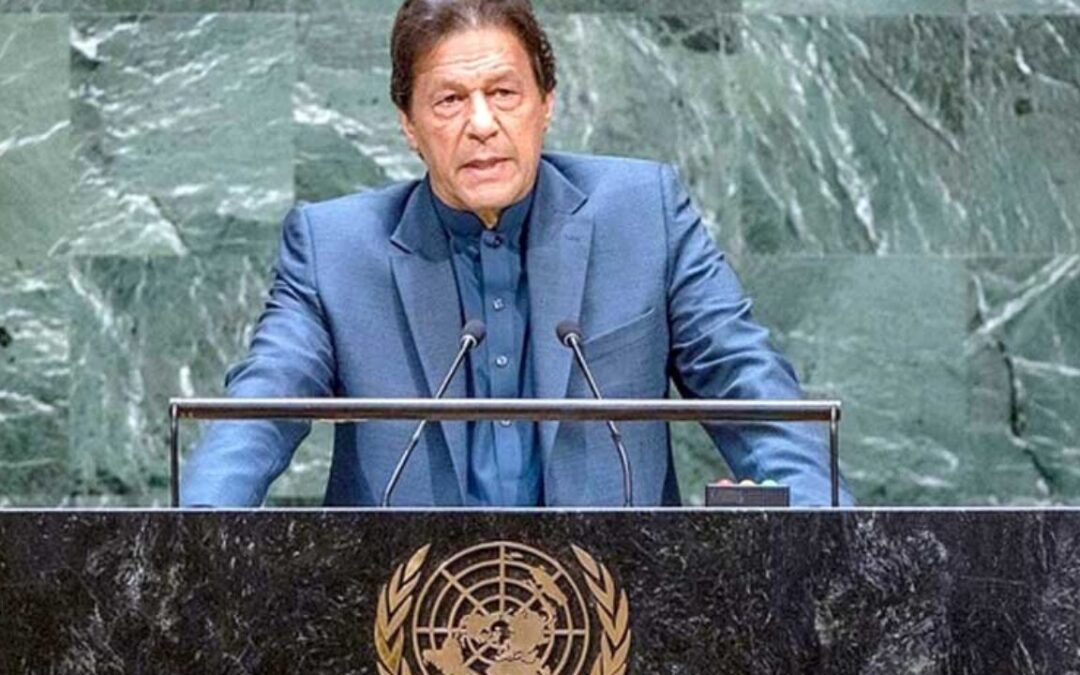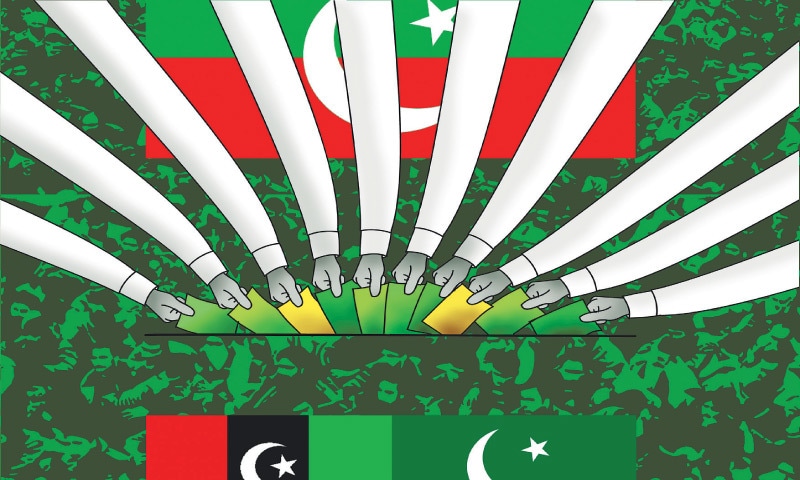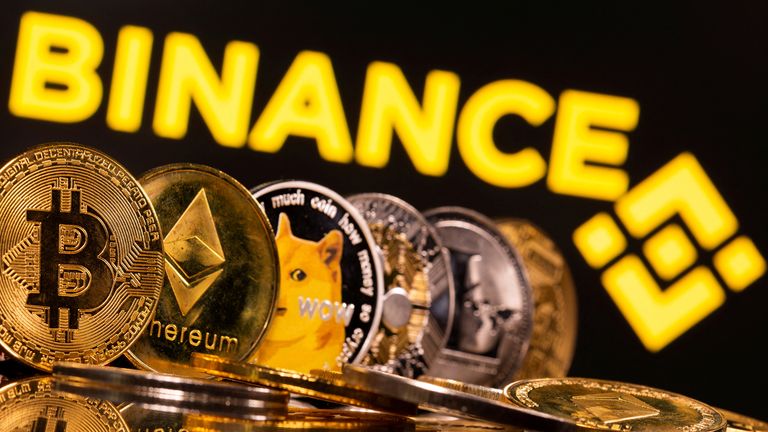
by admin | Aug 26, 2023 | Imran Khan, Pakistan
Imran Khan, full name Imran Ahmed Khan Niazi, is a prominent Pakistani politician, former international cricketer, and philanthropist. He was born on October 5, 1952, in Lahore, Pakistan. Imran Khan has played significant roles in both the world of sports and politics. Here’s an overview of his career and contributions:
1. Cricket Career:
Imran Khan is renowned for his achievements as a cricketer. He was a highly successful all-rounder, known for his fast bowling and batting prowess. Some highlights of his cricket career include:
- Captaincy of the Pakistan national cricket team: Imran Khan led Pakistan to their first-ever Cricket World Cup victory in 1992.
- All-rounder Achievements: He is one of the most successful all-rounders in cricket history, having scored over 3,800 runs and taken more than 380 wickets in Test matches.
- Retirement: Imran Khan retired from international cricket after the 1992 World Cup victory, marking the end of his cricketing career.
2. Political Career:
After retiring from cricket, Imran Khan transitioned into politics and established the Pakistan Tehreek-e-Insaf (PTI) political party in 1996. His political journey includes:
- Political Activism: Imran Khan began advocating for social justice, anti-corruption measures, and reform in Pakistan’s political system.
- PTI’s Growth: PTI gradually gained popularity as a political alternative, focusing on issues such as good governance, economic reform, and social justice.
- 2018 General Elections: In the general elections held in 2018, PTI emerged as the largest party in the National Assembly, and Imran Khan was elected as the 22nd Prime Minister of Pakistan.
- Prime Ministerial Tenure: As Prime Minister, Imran Khan has aimed to address various challenges, including economic stability, governance reform, and social welfare.
3. Philanthropy and Social Work:
Throughout his life, Imran Khan has been involved in various philanthropic activities. He established the Shaukat Khanum Memorial Cancer Hospital & Research Centre (SKMCH&RC) in Lahore, Pakistan, which provides cancer treatment to patients regardless of their ability to pay. He also founded Namal University in Mianwali, which focuses on providing quality education to underserved regions.
Imran Khan’s legacy is marked by his achievements in cricket, his dedication to social causes, and his role as a political leader. His journey from a cricket legend to a prominent political figure has left a lasting impact on Pakistan’s history and society.

by admin | Aug 26, 2023 | Mobile Companies are in Pakistan and India, Pakistan, Uncategorized
How many Mobile Companies are in Pakistan and India and their users?
Pakistan and India have a competitive mobile market with several companies offering mobile services.
In Pakistan, there are major mobile service providers like:
- Jazz (Mobilink): One of the leading mobile operators in Pakistan.
- Telenor: Another prominent operator with a significant user base.
- Zong: Operated by China Mobile Pakistan, it has gained popularity in recent years.
- Ufone: A subsidiary of Pakistan Telecommunication Company Limited (PTCL).
- SCO (Special Communications Organization): Operates in specific regions, mainly serving Azad Jammu and Kashmir and Gilgit-Baltistan.
In India, the mobile market is extensive, and major players include:
- Jio (Reliance Jio): Known for its disruptive pricing strategies and rapid growth.
- Airtel (Bharti Airtel): One of the largest mobile operators in India.
- Vodafone Idea: Formed by the merger of Vodafone India and Idea Cellular.
Number of Mobile Users:
As of my last update, India had one of the largest mobile user bases in the world, with hundreds of millions of subscribers. Pakistan also had a significant number of mobile users, although the number was smaller compared to India.
Mobile Spending:
The daily mobile spending habits of users can vary widely based on factors such as income levels, usage patterns, and geographic locations. In both Pakistan and India, people spend money on various mobile-related services, including voice calls, text messages, data plans, mobile apps, and more. Daily spending on mobile phones can range from small recharges for basic services to larger expenditures for data plans and digital content.
It’s important to note that specific statistics about daily mobile spending might not be readily available and can vary greatly among individuals.
What is the use and uses of mobile phones?
Mobile phones, also known as cell phones or smartphones, have become an integral part of modern life and society. Their versatility and convenience have led to a wide range of uses that extend far beyond simple voice communication. Here are some of the primary uses and purposes of mobile phones:
- Communication: The primary function of mobile phones is communication. They allow users to make voice calls, send text messages (SMS), and use various messaging apps for instant messaging, video calls, and voice notes. Communication can take place locally and globally.
- Internet Access: Mobile phones provide access to the internet, enabling users to browse websites, search for information, read news, and connect with social media platforms. This feature has transformed the way people access and consume information.
- Social Networking: Mobile phones facilitate social interactions through various social media platforms like Facebook, Twitter, Instagram, and more. Users can share updates, photos, and videos, and engage with friends, family, and followers.
- Entertainment: Mobile phones offer a plethora of entertainment options. Users can watch videos, stream movies, and TV shows, listen to music, play games, and even read eBooks.
- Navigation and Maps: GPS-enabled smartphones provide navigation services, helping users find directions, locate places of interest, and plan routes for travel.
- Productivity: Mobile phones serve as productivity tools, with apps for email, calendars, note-taking, task management, and document editing. They enable users to stay organized and efficient on the go.
- E-Commerce: Mobile phones have transformed the way people shop. Users can browse online stores, compare prices, read reviews, and make purchases directly from their devices.
- Banking and Finance: Mobile banking apps allow users to check their account balances, transfer funds, pay bills, and even invest in financial products. Mobile wallets enable cashless transactions.
- Health and Fitness: Health-related apps can track physical activity, monitor heart rate, provide nutrition information, and even offer guided workouts. Users can also access medical information and telemedicine services.
- Photography and Video: Mobile phones have become primary devices for photography and videography. Advanced camera technologies allow users to capture high-quality photos and videos and instantly share them online.
- Education: Mobile phones provide access to educational resources, online courses, language learning apps, and educational games, making learning more accessible and flexible.
- Emergency Services: Mobile phones play a crucial role in emergencies. They allow users to call for help, contact emergency services, and share location information.
- Smart Home Integration: With the rise of smart home devices, mobile phones can control and monitor various aspects of the home, including lighting, security cameras, thermostats, and more.
- Business and Work: Mobile phones are essential for professionals on the go. They enable remote work, communication with colleagues and clients, access to business apps, and email management.
- Environmental Monitoring: Mobile phones can be used to collect and share data for various environmental monitoring purposes, such as weather forecasting, pollution tracking, and wildlife observation.
The uses of mobile phones continue to expand as technology evolves and new apps and functionalities are developed. They have become an indispensable tool that enhances various aspects of daily life and contributes to the interconnectedness of the modern world.

by admin | Aug 26, 2023 | Analyzing the Current Political Landscape in Pakistan, Pakistan
Analyzing the Current Political Landscape in Pakistan: Election Dynamics and the Role of the Caretaker Government
- Introduction
- The Evolving Political Scene in Pakistan
- Significance of Elections and Caretaker Governments
- Current Political Situation
- Major Political Parties and Their Positions
- Emerging Issues and Public Sentiments
- Upcoming Elections
- Scheduled Elections and Their Importance
- Preparations and Political Alliances
- Caretaker Government: Its Role and Formation
- Purpose of a Caretaker Government
- Process of Selecting Caretaker Officials
- Challenges and Controversies
- Ensuring Transparency and Fairness
- Addressing Allegations of Bias and Manipulation
- International Observers and External Influence
- Role of International Organizations in Elections
- Balancing Sovereignty and External Observations
- Public Expectations and Participation
- Civic Engagement and Voter Turnout
- Expectations from Elected Representatives
- Media’s Role and Election Coverage
- Media’s Influence on Public Perception
- Responsible Journalism during Election Period
- Caretaker Government’s Responsibilities
- Ensuring Neutral Administration
- Facilitating a Smooth Transition
- Future Implications and Prospects
- Impact of Election Outcomes on Policy Direction
- Upholding Democratic Values and Governance
- Conclusion
- Navigating Political Waters: Elections and the Caretaker Government
1. Introduction:
Pakistan’s political landscape is characterized by its complexity and continuous evolution. This report delves into the current political dynamics, the impending elections, and the role and significance of the caretaker government in the democratic process.
2. Current Political Situation:
An overview of the leading political parties, their stances on key issues, and the prevailing sentiments among the public sets the stage for understanding the broader political context.
3. Upcoming Elections:
Scheduled elections represent a crucial turning point for the nation. The report examines the preparations, political alliances, and the significance of these elections.
4. Caretaker Government: Its Role and Formation:
The purpose and role of the caretaker government in ensuring a level playing field for elections are discussed, along with insights into how caretaker officials are selected.
5. Challenges and Controversies:
Challenges related to transparency, fairness, and allegations of bias or manipulation are central to a meaningful electoral process and are explored within this context.
6. International Observers and External Influence:
The role of international organizations in observing elections and the delicate balance between maintaining national sovereignty and welcoming external observers are examined.
7. Public Expectations and Participation:
Voter engagement, turnout rates, and public expectations from elected representatives play a pivotal role in shaping election outcomes.
8. Media’s Role and Election Coverage:
The influence of media on public perception and responsible journalism practices during the election period are crucial for accurate information dissemination.
9. Caretaker Government’s Responsibilities:
Ensuring a neutral administration, facilitating a smooth transition of power, and maintaining an environment conducive to fair elections are key responsibilities of the caretaker government.
10. Future Implications and Prospects:
The report delves into the potential ramifications of election outcomes on policy direction and governance, emphasizing the importance of upholding democratic values.
11. Conclusion:
The interplay between elections and the caretaker government serves as a foundation for Pakistan’s democratic process. By navigating the complexities of the political landscape, the nation can continue on its path toward effective governance and political stability.

by admin | Aug 26, 2023 | Energy, The energy crisis in Pakistan causes effects and solutions
The energy crisis in Pakistan causes effects and solutions
- Introduction
- Overview of Pakistan’s Energy Landscape
- The Looming Energy Crisis: A Prelude
- Causes of the Energy Crisis
- Insufficient Energy Generation Capacity
- Dependence on Non-Renewable Energy Sources
- Circular Debt and Financial Challenges
- Effects of the Energy Crisis
- Economic Impact and Productivity Constraints
- Social Implications: Health and Quality of Life
- Stifling Industrial Growth and Investment
- Challenges and Considerations
- Balancing Energy Demand and Supply
- Environmental Concerns and Climate Commitments
- Addressing Inefficiencies and Infrastructure Gaps
- Sustainable Solutions
- Diversification of Energy Sources
- Accelerating Renewable Energy Adoption
- Energy Efficiency and Conservation Measures
- Overhauling Energy Sector Governance
- Government Initiatives and Policies
- Power Sector Reforms and Long-Term Plans
- Investment Incentives for Renewable Energy
- Initiatives to Tackle Circular Debt
- International Collaborations
- Bilateral and Multilateral Partnerships
- Learning from Global Energy Transition Models
- Community Engagement and Awareness
- Educating Citizens about Energy Conservation
- Promoting Proactive Energy Consumption Patterns
- Future Prospects
- A Transition Towards Energy Security
- Realizing Sustainable Development Goals
- Conclusion
- A Call to Action: Collective Efforts to Overcome the Energy Crisis
1. Introduction:
Pakistan’s energy crisis poses a multifaceted challenge that impacts various aspects of the nation’s development. This comprehensive report delves into the causes behind the crisis, and its widespread effects, and proposes sustainable solutions to steer the country towards a brighter energy future.
2. Causes of the Energy Crisis:
The energy crisis in Pakistan has been driven by factors such as inadequate energy generation capacity, a heavy reliance on non-renewable energy sources, and the weight of circular debt within the energy sector.
3. Effects of the Energy Crisis:
The consequences of the energy crisis permeate every facet of society, including the economy, public health, and industrial growth. High costs, power outages, and reduced productivity have hindered Pakistan’s progress.
4. Challenges and Considerations:
Balancing energy demand and supply is a delicate challenge, further complicated by environmental concerns and infrastructure limitations. The need for a holistic approach is evident.
5. Sustainable Solutions:
The road to energy security involves diversifying energy sources, prioritizing renewable energy adoption, embracing energy-efficient practices, and reforming energy sector governance.
6. Government Initiatives and Policies:
Pakistan’s government has introduced power sector reforms, incentivized investment in renewable energy, and taken measures to address the circular debt issue.
7. International Collaborations:
Bilateral and multilateral partnerships play a pivotal role in sharing knowledge and experiences to aid Pakistan’s energy transition journey.
8. Community Engagement and Awareness:
Educating citizens about energy conservation and promoting responsible consumption habits can collectively contribute to reducing energy demand.
9. Future Prospects:
With the right mix of policies, investments, and societal commitment, Pakistan can move closer to achieving energy security while contributing to sustainable development goals.
10. Conclusion:
The energy crisis in Pakistan necessitates a concerted effort by all stakeholders to usher in a new era of energy resilience. By understanding the causes, mitigating effects, and implementing sustainable solutions, Pakistan can forge a path toward energy security and sustainable growth.

by admin | Aug 26, 2023 | Binance, a Crypto Giant, Grapples with Legal Challenges in Russia, Technology
Binance, a Crypto Giant, Grapples with Legal Challenges in Russia
- Introduction
- Binance: Leading Global Cryptocurrency Exchange
- Legal Scrutiny and Developments in Russia
- Regulatory Landscape in Russia
- Evolution of Cryptocurrency Regulations
- Recent Shifts in Regulatory Approach
- Binance’s Operations in Russia
- Binance’s Popularity and Services in Russia
- Regulatory Concerns Raised by Russian Authorities
- Key Legal Challenges
- Compliance with AML and KYC Regulations
- Unauthorized Operations and Regulatory Violations
- Response from Binance
- Engaging with Regulatory Authorities
- Implementing Enhanced Compliance Measures
- Impact on the Cryptocurrency Industry
- Market Sentiment and Investor Confidence
- Potential for Regulatory Reform and Clarity
- International Ramifications
- Global Nature of Binance’s Operations
- Collaborative Efforts between Countries
- Future Outlook
- Path Forward for Binance and Regulatory Authorities
- Implications for the Cryptocurrency Ecosystem
- Conclusion
- Balancing Innovation with Regulatory Compliance
- Binance’s Journey Amid Legal Challenges
1. Introduction:
Binance, recognized as one of the foremost players in the cryptocurrency space, is currently navigating a complex legal landscape in Russia. This report delves into the legal risks Binance faces over its operations in the country and the potential ramifications for both the exchange and the broader cryptocurrency industry.
2. Regulatory Landscape in Russia:
Russia’s stance on cryptocurrency regulations has evolved over time, reflecting a balance between fostering innovation and safeguarding financial stability. Recent regulatory shifts have placed increased scrutiny on cryptocurrency activities within the country.
3. Binance’s Operations in Russia:
Binance has garnered significant popularity in Russia, offering a range of cryptocurrency trading and investment services to its users. However, the exchange’s activities have raised concerns among Russian regulatory authorities, leading to legal challenges.
4. Key Legal Challenges:
Binance’s legal challenges in Russia revolve around compliance with anti-money laundering (AML) and know-your-customer (KYC) regulations. Authorities have also expressed concerns over unauthorized operations and potential regulatory violations associated with the exchange’s activities.
5. Response from Binance:
In response to the legal challenges, Binance has engaged with Russian regulatory authorities to address concerns and establish a framework for compliance. The exchange has undertaken efforts to enhance its compliance measures and align with local regulations.
6. Impact on the Cryptocurrency Industry:
The legal issues faced by Binance have had an impact on market sentiment and investor confidence not only in Russia but globally. The situation highlights the need for clear regulatory guidelines and the potential for regulatory reform to provide more clarity for industry participants.
7. International Ramifications:
Binance’s operations extend beyond Russia, and its legal challenges have international ramifications. Cryptocurrency exchanges that operate across borders must navigate various regulatory regimes and collaborate with multiple jurisdictions.
8. Future Outlook:
The path forward for Binance involves continued collaboration with regulatory authorities to establish a compliant framework. The situation also prompts discussions about the regulatory landscape for cryptocurrencies and its implications for the industry’s growth.
9. Conclusion:
The case of Binance in Russia underscores the delicate balance between fostering innovation in the cryptocurrency space and adhering to evolving regulatory standards. As the legal challenges unfold, Binance’s response and the regulatory developments will likely shape the future trajectory of the cryptocurrency ecosystem, influencing how exchanges and regulators interact in the global arena.





